Low-growing asters: varieties, cultivation and reproduction

Ornamental aster bushes are less than half a meter high and look good on flower beds. The ancient Greeks considered this flower to be a good luck charm; they planted it not only at home, but also near temples.
Garden paths are now framed with this culture, borders are made of it, especially asters are beautiful in the autumn landscape, because in September-October there is not so much brightness.

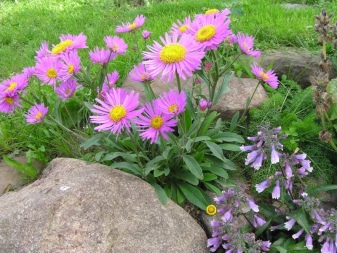
Peculiarities
Low-growing plants attract summer residents with their resistance to cold and even frost. The following flowering periods are distinguished:
- early (May-June);
- summer (July-August);
- autumn (September-November).
Inflorescences bloom with a diameter of 1-5 centimeters, flowering duration - 30-40 days. The palette contains blue-white, purple-crimson shades, there are pale pink, blue and carmine. The stem is straight, hard, covered with dark green leaves, grows in height up to 40 centimeters.
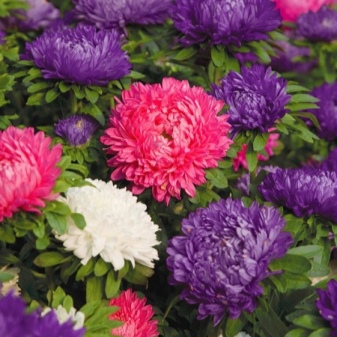

Popular varieties
Many names are associated with the place where varieties were bred or growing characteristics, for example, Italian aster, New Belgian. There are a lot of varieties of asters. Among them, there are separately undersized varieties that can be grown both in flower beds and in pots on balconies.
- "Milady". A dwarf variety with large (10 cm in diameter) densely double flowers grows up to 25 cm. It comes in a variety of shades from bright red to white and pink. There are blue and purple specimens. Representatives of this variety bloom earlier than others from this family of asters for at least 2 weeks. Flowering lasts from July to September. The variety is not afraid of diseases, unpretentious in care.
- Scarlet. Pion-shaped aster with large flowers. In many respects it is similar to the Milady variety. Does not require special care conditions.
- "Cressella". Miniature aster blooms in dense double buds by July 15 and lasts until frost. There is a plant with 12 inflorescences, the inner part of its petals is bent to the center. It is also applicable as a pot culture.
- Crimson. The bush grows in breadth and upward equally - up to 30 centimeters. The short petals of the densely doubled flower are bent outward. "Crimson" is grown in boxes, flowerpots. In the open field, the variety will look good in flower beds, flower beds, borders. Blooms until late autumn.
- "Erfurt dwarf". The plant with sparkling flat-rounded and densely double flowers reaches a height of 25-30 centimeters. Well suited for window and balcony compositions, borders on flower beds.
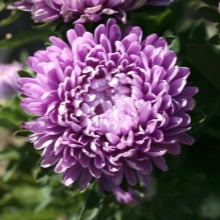
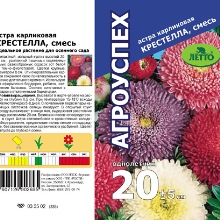

Landing
Perennial asters love the sun, respectively, they are selected a site not in the shade. It is very important that the soil does not retain water, that is, the lowland will not work. Ideally, it is good to plant a decorative low-growing aster on a small hill where sunlight will be available. The best time to plant is spring. Planting material is best purchased at specialized retail outlets, greenhouses, you can grow yourself by sowing seeds.
Aster is planted, like other flowers: they make a hole, water it, sprinkle the sprout with soil.

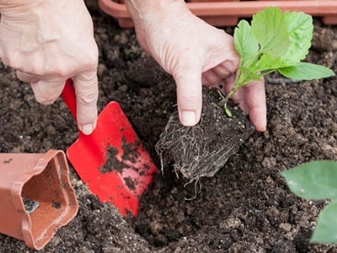
Follow-up care
Perennial undersized aster does not require special care. This is an unpretentious plant, but for a more lush flowering, you need to perform a number of activities. So, around it, weeds must be removed so that pests do not drown out small flowers. A it is better to mulch the soil with a composition of peat, tree bark, or cover it with ordinary sawdust, then you can forget about weed grass... Mulch will fulfill not only the role of a weed cleaner, but also allow the soil to remain moist for a long time.

Watering
Astra does not like abundant watering, especially when water is retained in the soil. But in order for flowers to grow faster, in summer, in heat or dry time, it cannot do without moisture. Watering is recommended in the evening.

Top dressing
Ornamental varieties need organic matter, lime and mineral fertilizers for normal development. They are brought under the bushes in the spring and summer. Humus contributes to active growth, and feeding with phosphorus will help the plant form large inflorescences.

Pruning
Shrub little aster is cut off at least 10 centimeters to form a beautiful crown. In this case, compact bushes look better in curbs. The event is held in autumn or early spring.
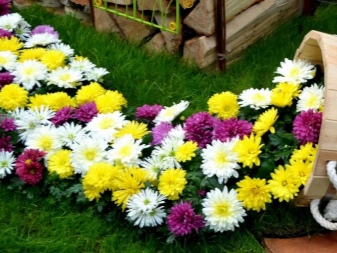

Preparing for winter
Aster pleases with flowers before the onset of cold weather. Before the onset of frost, it is recommended to cut the bushes at the root and close them with compost for the winter. If winters are not severe, it is enough to sprinkle with foliage or cover with sawdust. This is needed by young bushes with a fragile root system.


Disease and pest control
In the absence of proper care or with excessive dampness, stunted aster can be disturbed by gray rot and powdery mildew. A soap solution will help rid the plant of these unpleasant diseases. This treatment is carried out several times during the season.
Asters also suffer from fungal diseases.
- Fusarium disease leads to yellowness and wilting of the plant. It is almost impossible to cope with this fungus. Compliance with the rules of crop rotation, as well as burning affected bushes will help protect other flowers and crops from the disease.
- Cicadas and aphids become the causes of jaundice in asters. In this case, the infected flowers are removed, and healthy ones are treated with insecticides.
- Black leg disease typical for seedlings, but adult bushes can also be infected. Plants, starting from the root, turn black and rot due to excess moisture or overestimated acidity in the soil. Such affected specimens are disposed of, they are burned, and the soil is watered with a dissolved fungicide, sand is poured on top.
Astram can be harmed by a meadow bug, spider mite, earwig and other parasites. It will be possible to avoid an attack from their side if the rules of care are observed.



Reproduction
Seedlings will allow you to get gorgeous aster flowers subject to the following deadlines:
- in late March - early April, seeds are sown;
- by May 15, young shoots are planted separately in the area where they can grow for 5 years.
There are 2 more breeding methods.
- Cuttings perennial asters begin in early spring with the appearance of the first shoots. Before planting cuttings, they are recommended to be kept in a solution to stimulate development or simply in water. Shoots are planted in the shade or separately under the film, they need to be watered and weeded regularly. Landing in a permanent place is made only after a year.
- Dividing the bush used when the plants are overgrown. After 5 years, the aster must be planted. The old root is removed from the mother bush, the remaining rhizome with shoots is divided into several parts. Autumn is suitable for dividing early varieties; in spring, late asters are propagated this way.
By choosing one of the breeding methods, you can admire the flower carpet made from these mini-plants for a long time.


Examples in landscape design
Aster is used independently when creating flower beds or in an ensemble with other flowers. Here are some examples:
- creation of borders, hedges in the garden;
- green aster sculptures, figures, patterns will decorate any city site;
- a flower carpet made of undersized plants, possibly in the vicinity of carnations, dahlias, peonies, phloxes, will perfectly “cover” any ugly places and areas.
The decorative aster is prized for its star-like flower, variety of bright colors and shape.



For information on how to grow asters in buckets, see the next video.







































































































The comment was sent successfully.